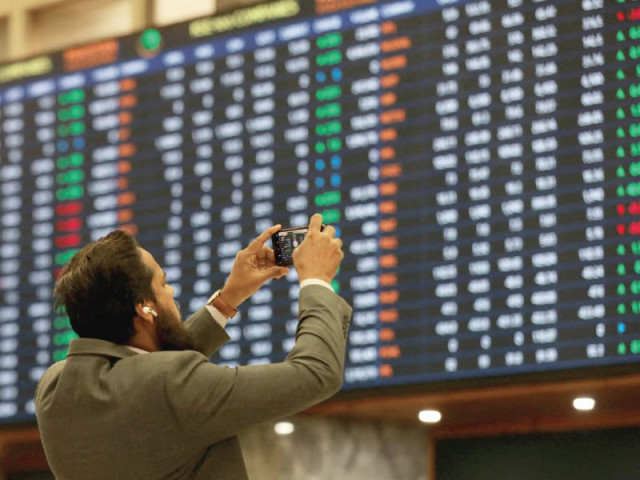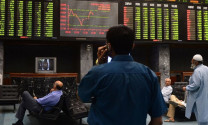Unchartered territory at PSX
Rally attracts cautious investors as undervalued stocks, likely rate cuts fuel optimism

Mr Market, the famously unpredictable character from Ben Graham's allegory, seems to have returned with renewed energy, and this time he's throwing quite the party at the Pakistan Stock Exchange (PSX). But not everyone is in the mood to dance along. For long-term investors who thrive on finding bargains, the "clearance sale" appears officially over. Even the opportunistic short-term traderstypically the life of such ralliesare treading carefully, pocketing profits, and quietly slipping out the back door. The sudden surge has sparked more caution than celebration, hinting that not everyone believes this rally has the legs to keep running. However, there's always a method in every market madness, and the PSX's rally is no exception as we explore some of the key factors driving this momentum.
Favourable valuations and anticipated rate cuts
The rally is driven by the fact that Pakistani stocks remain undervalued compared to regional markets. The KSE-100 index currently trades at an average price-to-earnings (P/E) ratio of 5.3, significantly below the regional average of 12-15, making it attractive for both local and foreign investors.
Additionally, analysts expect the State Bank of Pakistan (SBP) to announce a reduction in interest rates, spurred by signs of moderating inflation. Yields on government bonds have already declined by 100-150 basis points, signalling that the market has priced in potential rate cuts. Lower borrowing costs could further accelerate economic activity and boost corporate profitability, making equities an even more appealing investment avenue.
The market anticipates the interest rates to be around 14% by end December, with two remaining Monetary Policy Committee (MPC) meetings for the year. A cumulative reduction of 350 basis points seems likely, driven by easing inflationary pressures and a global trend of monetary loosening. Central banks, including the Federal Reserve and the European Central Bank (ECB), are leading a wave of rate cuts amid concerns over a global economic slowdown. The recent cooling of commodity prices, such as oil, further supports the case for domestic rate cuts, as recession fears weigh on global markets.
Institutional and high net worth buyers shifting gear
Local institutional investors, including mutual funds and asset management companies, have been actively shifting investments from the traditional money market and real estate sectors into the stock market. Last Wednesday, when the PSX cleared the 87,000 mark, the total value of traded shares reached Rs26.82 billion, up from Rs25.02 billion a day earlier, underscoring growing market confidence. While long-term returns in real estate have roughly matched the stock market, the depth and informality of the former have historically made it the obvious choice. However, recent tax regulations and a crackdown on informal transactions have slowed down the real estate market, redirecting some capital to the stock market. Additionally, falling yields in fixed-income securities have sparked interest in high-yielding stocks with a long history of stable payouts.
Foreign inflows reviving with currency stability
Foreign investors have also started re-entering the market, drawn by stable macroeconomic indicators and a calmer political environment. The Pakistani rupee has remained steady, closing at Rs277.73 per US dollar, which has reduced currency volatility risks. Renewed foreign interest is especially visible in the energy and infrastructure sectors, which stand to benefit from economic reforms aimed at curbing circular debt and from a favourable policy environment.
Foreign investors have also been encouraged by recent events, such as the visit of Saudi officials, renewed commitments from allied countries for loan rollovers, and the successful conclusion of the Shanghai Cooperation Organisation (SCO) summit in Pakistan. These developments have boosted confidence in the long-term stability of the economy, leading foreign investors to take the PSX more seriously.
Conclusion: overdue recovery with a positive outlook
The Pakistan Stock Market has a lot of ground to recover after a nearly six-year downturn, and analysts are optimistic that the KSE-100 index could reach the 100,000 mark by year-end, provided political stability continues and policy decisions align with market expectations.
While technology, energy, and infrastructure are likely to remain the top beneficiaries of a potential economic turnaround, the resilient fertiliser sector may provide much-needed yield to offset declining returns from fixed-income assets.
THE WRITER IS A FINANCIAL MARKET ENTHUSIAST AND IS ATTACHED TO PAKISTAN'S STOCKS, COMMODITIES AND EMERGING TECHNOLOGY



















COMMENTS
Comments are moderated and generally will be posted if they are on-topic and not abusive.
For more information, please see our Comments FAQ